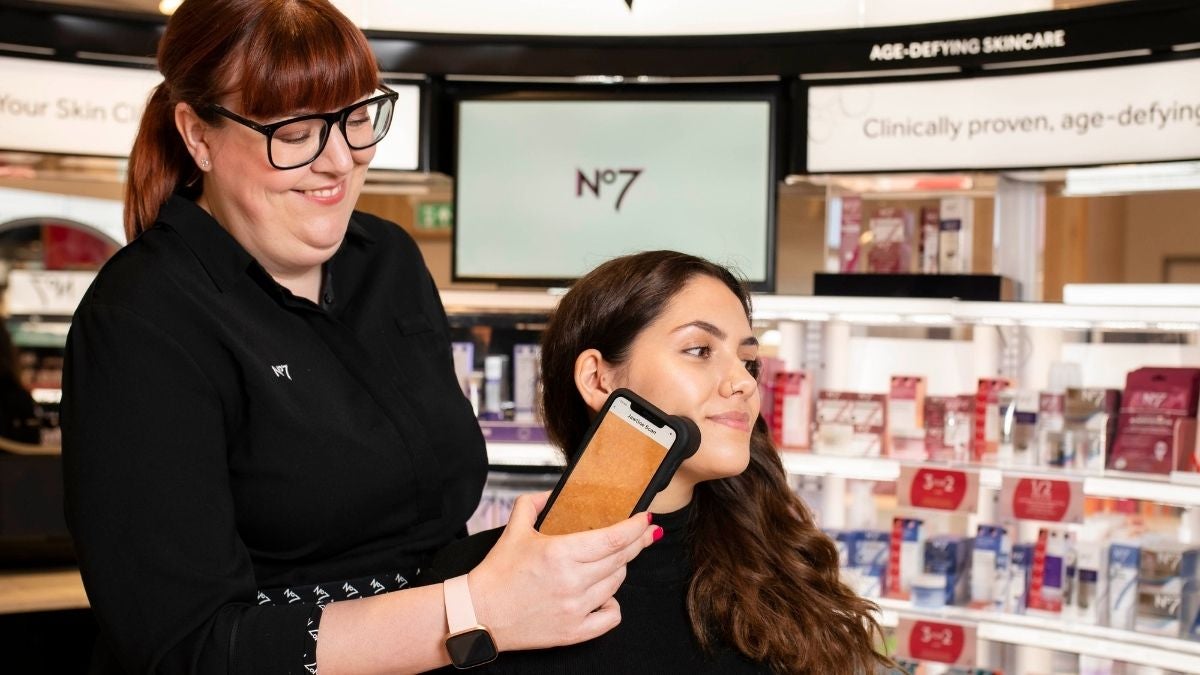
After Covid restrictions had prevented his IT department from visiting the firm’s stores across the UK and Ireland for the best part of two years, Richard Corbridge urgently needed a way to reconnect the function with the customer-facing part of Boots.
“What we hit upon was how we could reinvigorate that relationship as soon as possible, rather than letting it be a slow burn,” says Corbridge, who was promoted to CIO from director of innovation at Boots UK in August 2020. “I had the idea of picking one day where we would try to visit as many stores as we could. We wanted to see if we could make a big impact quickly.”
On 17 March this year, about 200 IT specialists duly travelled to well over 300 retail outlets, ranging from the flagship stores in London’s Covent Garden and Sheffield’s Meadowhall centre all the way down to its smallest cornershop pharmacies. Their mission: to glean as much information as possible about the biggest tech concerns of those on the front line.
To ensure that members of his team were fully engaged in this wide-ranging exercise, he encouraged them to organise their own itineraries and decide which sites they would visit. If they so wished, they could use their field trips as a basis for going on to meet friends and relations, for instance.
“People could decide wherever they wanted to go – and they didn’t feel they had to come up with a reason for their choice of destination,” Corbridge says. “We tried to empower the team to enjoy the day and get the most out of it for themselves, which is probably why it was so successful.”
He continues: “Our 45,000 colleagues in the Boots portfolio are seeing customers day in, day out. They gain so much insight into what consumers are seeking from technology. On the front line, they know better than those of us who sit in a tech development lab or at head office about what our customers really want.”
Corbridge feels it’s the role of a CIO to understand what the customers’ requirements are and then determine the best way to meet those needs. “If we’re wanting to offer them a personalised journey, the only way to do that is to bring technology and data together and then work out how to make that change happen,” he says.
On the day of the visits, Corbridge also held an open video chat session in which anyone could update him on IT problems they were experiencing. More than 650 calls were logged.
I see my expertise as being about how to make successful changes happen at pace
Armed with all the new information, his team swiftly completed a strategy that was presented to the executive team the following afternoon.
“We put a price tag and a timeframe on it. The next day it was approved as our first store-centric IT strategy,” Corbridge says.
It’s crucial for the IT function to use projects such as this to learn about what’s happening on the front line, he stresses. It should ensure that the customer experience will be more “exciting, invigorating and convenient” in any Boots outlet, whatever its size.
Corbridge explains: “We’re in the middle of rolling out a huge new network capability across the whole of the estate. One of the key things we learnt from the day was that we need to do this more quickly because stores are really struggling with connectivity. When customers are in stores and can’t get a Wi-Fi connection, it’s hampering their experience, particularly as Boots has moved its loyalty card on to mobile phones.”
Another key insight arising from the project was how hard it can be for a member of staff in a busy store to contact the IT helpdesk quickly whenever something breaks. It also highlighted a wider issue concerning internal communications.
“It was interesting,” he says. “One of the things we had created about nine months previously was the ability for stores to raise a help call by sending an email instead of ringing someone up. But staff in more than 80% of our stores hadn’t realised that they could do that. IT’s ability to communicate with them is something we really need to think through, so that we get more messages out to them and they understand what we’re trying to do.”
This aspect is crucial to the part that CIOs play in transforming businesses, notes Corbridge, who adds: “My role is becoming more and more about business transformation because business transformation is becoming more and more reliant on technology.”
This makes it important for the CIO to be part of the senior leadership team – something that he has been at Boots ever since assuming the role.
“I don’t see my expertise really being about technology when I’m sitting on the executive board,” Corbridge says. “I see my expertise as being about how to make successful changes happen at pace. As a CIO, you’re leaning on your team for the level of technological knowledge required. Your own skill is more about connecting people and providing the answers to the transformation questions.”
Building on Boots’ first store-centric IT strategy, he’s already thinking about further projects to support tech innovation and inform the company’s wider strategy.
“We’re lucky that our leadership team really values what tech can do,” Corbridge says. “Our managing director [Sebastian James] has been really clear that IT is an intrinsic part of the transformation, so it needs to have a seat on the board and the capability to do all the work that’s needed.”
The three key strands of Boots’ tech innovation strategy

1. Online
A central component of Boots’ new plan concerns “super-scaling” the website so that it can handle much higher numbers of users shopping at any given time, according to Corbridge. Personalisation is another important element. Once you’ve shopped online at Boots and return to the site, it will know what you’ve bought previously and “how to tailor your basket at checkout with offers, so that all the most valuable things you might think of from Boots are there”.
2. Healthcare
The second strand concerns Boots’ ability to offer “personalised healthcare on the high street”. Corbridge says that he’s intent on applying here what the company has learnt from personalising the retail journey. This includes using tailored online content to give customers access to relevant medical information such as updates from NHS trusts and Boots pharmacists.
3. Physical retail
The third strand focuses on bringing the digital and physical customer experiences closer together. For instance, customers who use the Boots app when they are visiting a bricks-and-mortar store will be granted access to new items on their devices.

After Covid restrictions had prevented his IT department from visiting the firm’s stores across the UK and Ireland for the best part of two years, Richard Corbridge urgently needed a way to reconnect the function with the customer-facing part of Boots.
“What we hit upon was how we could reinvigorate that relationship as soon as possible, rather than letting it be a slow burn,” says Corbridge, who was promoted to CIO from director of innovation at Boots UK in August 2020. “I had the idea of picking one day where we would try to visit as many stores as we could. We wanted to see if we could make a big impact quickly.”
On 17 March this year, about 200 IT specialists duly travelled to well over 300 retail outlets, ranging from the flagship stores in London’s Covent Garden and Sheffield’s Meadowhall centre all the way down to its smallest cornershop pharmacies. Their mission: to glean as much information as possible about the biggest tech concerns of those on the front line.





